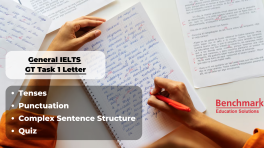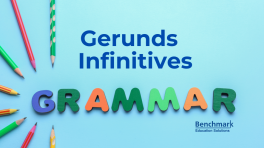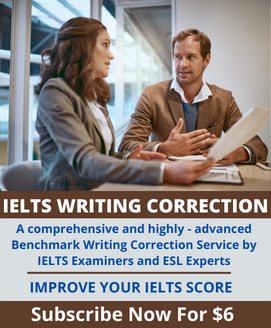Grammar for IELTS Academic Writing Task 1 Report
- 0 Comments
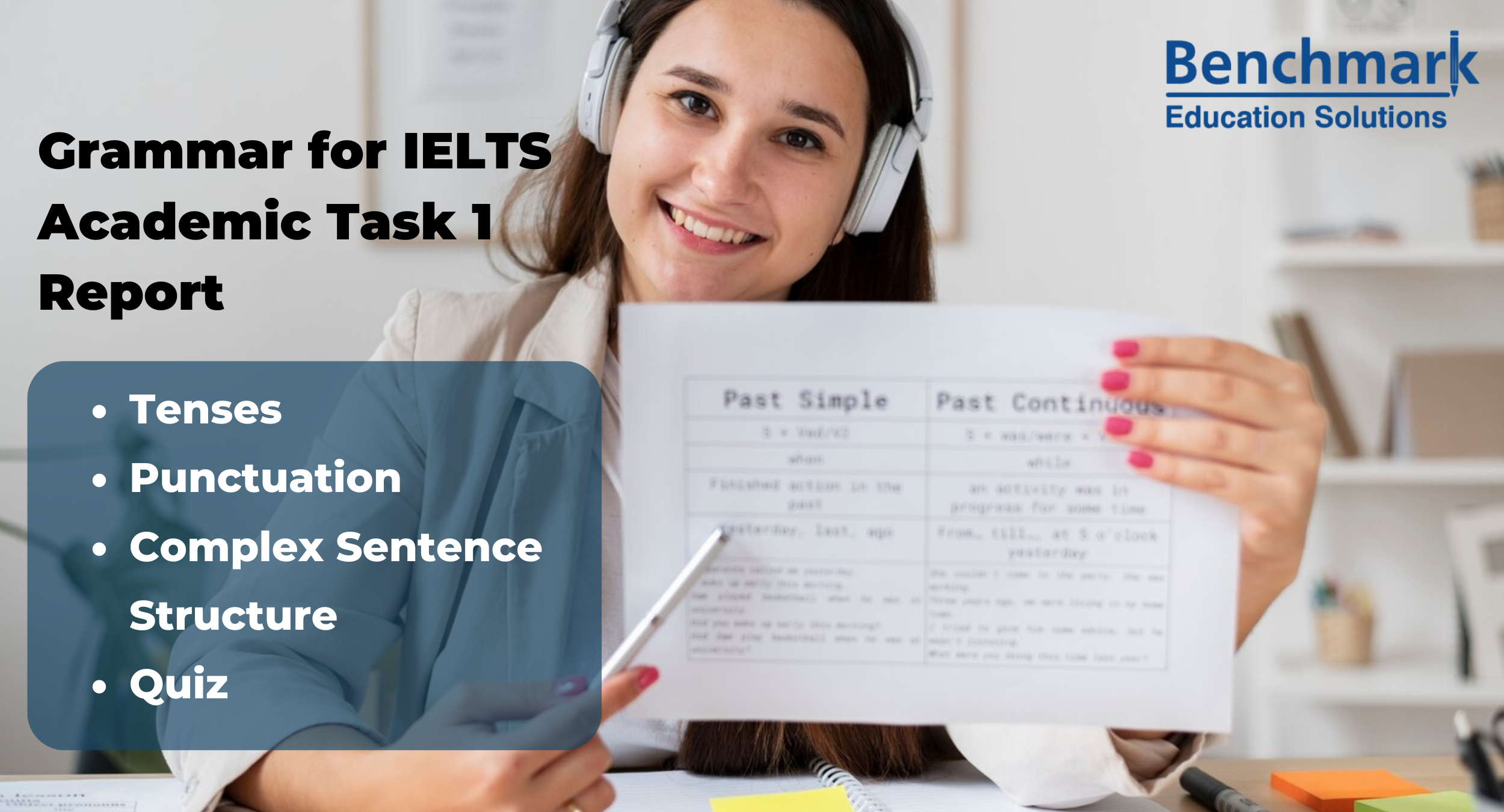

IELTS Academic Task 1 is all about testing your ability to analyse a graph, chart, or diagram. Although this can seem a little intimidating, it’s actually quite straightforward if you know what the examiner is looking for.
A wide range of grammatical structures to cover the scope of the task 1 with control and flexibility are important for a band 9 in grammatical range and accuracy. However, grammatical mistakes can lower your score. Now, let’s take a deeper look into the common grammatical mistakes IELTS candidates make, so that you don’t have to make the same ones.
Table of Contents
1. Tenses
When analysing a graph, you’re expected to report on data from the past, the present, and future predictions. It’s essential that you incorporate tenses for IELTS writing accurately to obtain a high band score.
Take a look at some of the examples and rules, based on the bar graph below.
You should spend about 20 minutes on this task.
The graph below shows the number of international graduates from UK universities in 2000 and 2015.
Summarise the information by selecting and reporting the main features and make comparisons where relevant.
Write at least 150 words.
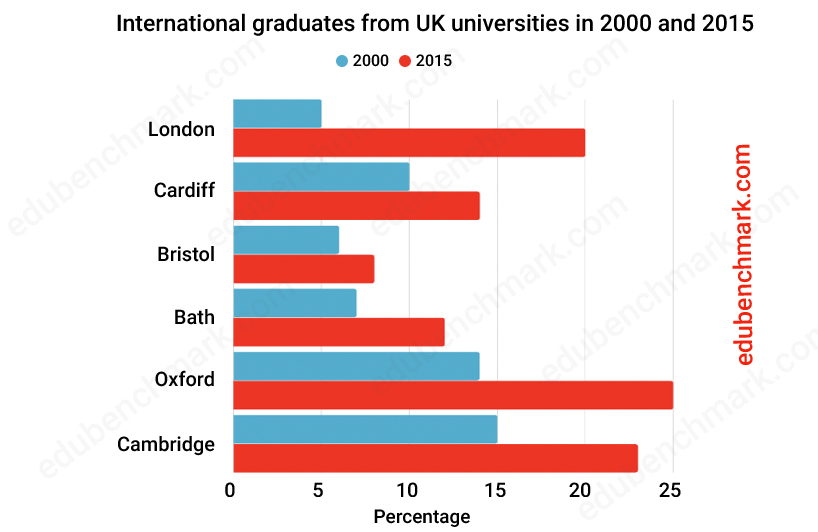

1.1 Past Simple
When you’re presented with data from the past, you’ll be expected to report on it using the past tense.
For example
In 2015, the university in the UK that produced the most international graduates was Oxford.
1.2 Past Perfect
This tense will need to be used whenever you’re using the preposition “by.”
For example
The number of international students that graduated from university in London in 2000 was around 5%, and by 2015, this number had dramatically increased to 20%.
1.3 Present Simple Passive with Graphs
In reference to the above bar graph, the Present Simple Passive can be used when describing any sort of graph to report what you see. All you need to do is start your sentence with the following present passive phrases:
- “It can be seen that…”
- “The number of … is shown to…”
For example
It can be seen that the largest number of international graduates in 2015 were at Oxford University.
1.4 Present Simple Passive with Diagrams
Task 1 Diagrams that demonstrate the process by which various items are produced are also popular in Academic Writing Task 1. When describing a production process, you’ll be expected to do so using the present passive.
The picture below show how tea is produced and then illustrate the process of making a cup of tea.
Summarise the information by selecting and reporting the main features making comparisons wher relavant.
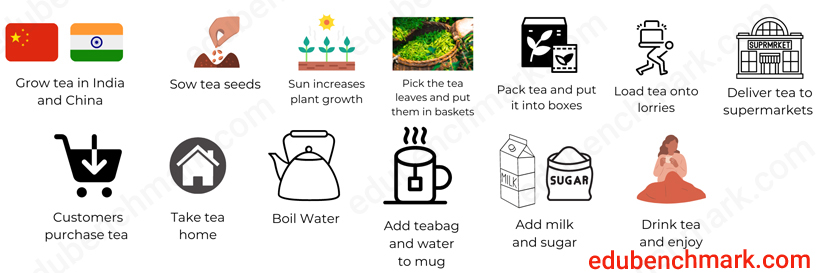

For example
Afterwards, the tea is packed and placed in the boxes.
1.5 Present Perfect
Whenever you’re presented with an IELTS line graph that displays data from the present as well as portrays future predictions, you’re able to use the present perfect. You’ll use this tense to report on data up to the present moment or discuss the illustrated predictions.
The graph gives information about the visitors to Cardiff and Dublin from 2010 to 2020.
Summarise the information by selecting and reporting the main features and make comparisons where relevant.
Write a minimum of 150 words
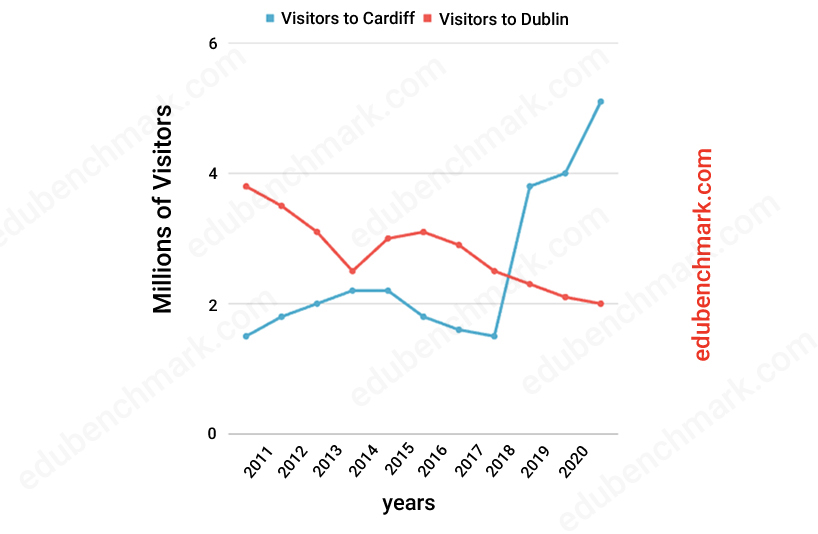

The line diagram above shows the predicted number of visitors to Cardiff and Dublin up to the year 2040. Even though it includes the future, you’ll never use the simple future tense to report on these predictions.
Instead, you’ll report on the predictions using the present perfect.
For example
In 2040, the number of visitors to Dublin is predicted to drop dramatically.
Meanwhile, the number of visitors to Cardiff is expected to rise.
Here’s an example of how you can express the data up to the present year that’s included in this line diagram:
This year, the number of visitors to Cardiff has moderately increased, and by 2040, the numbers are expected to rise more dramatically.
1.6 What if the graph or chart you’re given doesn’t indicate a year?
In this case, you’ll assume the data given is for the present time, so you’ll also make use of the present tense.
2. Punctuation
With all the punctuation symbols out there, this can seem a bit overwhelming. The two main mistakes candidates make in the writing task are as follows:
- Comma splice
- Hyphenating superlatives
Using the below graph as a reference, review these two rules to avoid making these common mistakes.
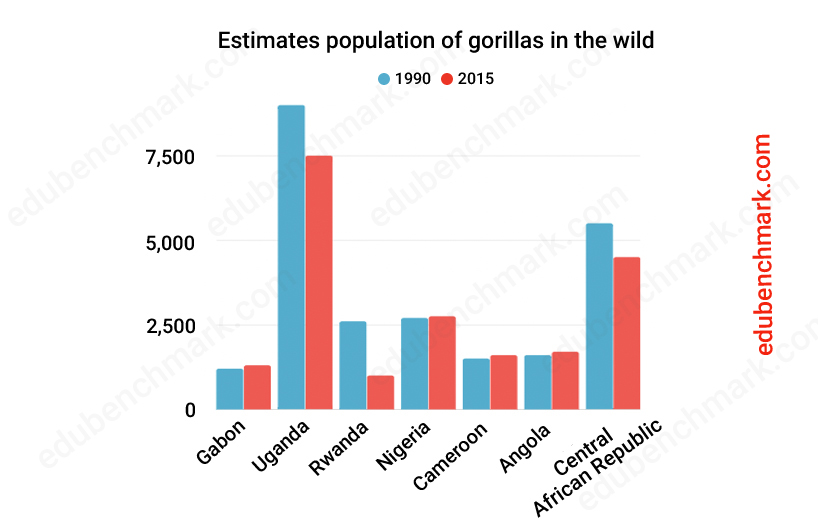

2.1 Comma Splice
Often, candidates over-use the comma in writing task 1 while reporting. This can easily be avoided when joining sentences together, by making use of:
- Semicolons
- Coordinating conjunctions
- Subordinating conjunctions
- Full-stops to separate sentences.
For example
The estimated population of gorillas in the wild in Gabon, Cameroon and Angola has only moderately increased from 1990 to 2015, but in Rwanda the estimated population has dropped dramatically.
Or
The estimated population of gorillas in the wild in Gabon, Cameroon and Angola has only moderately increased from 1990 to 2015. However, in Rwanda, the estimated population has dropped dramatically.
2.2 Hyphenating superlatives
Superlatives are a big part of the IELTS Academic Task 1.
When you describe something using superlatives, such as “second-lowest,” you create a compound adjective. It’s important to join compound adjectives with a hyphen. It helps clarify that “second” modifies “largest” together, forming a single descriptive term.
For example
The Central African Republic is estimated to have the second-largest population of gorillas in the wild.
3. Complex Sentence Structures
The use of complex sentences is required, although you don’t need to have a ton of them to achieve a high score. So, how many complex sentences do you really need?
Band 6: A mix of simple and complex sentences.
Band 7: A variety of complex structures.
Band 8: A wide range of structures.
Band 9: A wide range of structures with full flexibility and accuracy.
Complex sentences aren’t very difficult to form. Using conjunctions, you can join simple sentences together to create complex sentences.
Let’s take a look at a few examples of how you can do this in IELTS Academic Writing Task 1. The following examples is in reference to the bar graph above:
Instead of writing:
In 1990, Uganda had the highest-estimated population of gorillas in the wild. It is estimated that Gabon had the lowest-population of gorillas in 1990.
Rather say:
In 1990, Uganda had the highest-estimated population of gorillas in the wild, whereas it is estimated that Gabon had the lowest.
4. Academic Writing Task 1 Mock Test Sample
IELTS Task 1 Table
The table below shows the reasons that surveyed adults attended the theatre 20 years ago and today.
Summarise the information by selecting and reporting the main features and make comparisons where relevant
Write at least 150 words
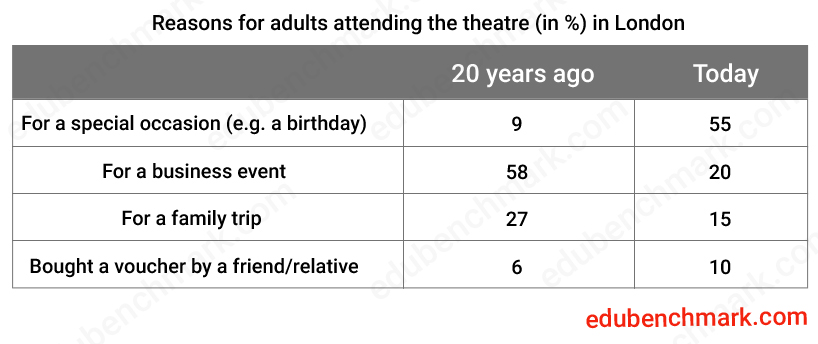

| Quiz |




